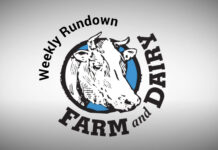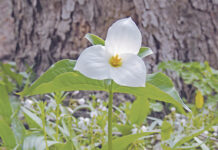This period of late summer into early fall is a critical time to be out scouting for weeds in pastures and forages, identifying problem areas and making plans for management. It’s advised to be watching for weeds all season long, but fall is an excellent time to manage biennial and perennial weeds.
There are several impacts that weeds have when allowed to establish in forages. This includes potential impacts with forage establishment or renovation, growth and vigor, potential yield impacts and negative impacts on quality and palatability. In years where moisture stress impacts forage stands, or in pastures that are over-grazed, poisonous plants can also become an issue as they may be browsed on due to lack of other options.
Biennial weeds, and some establishing perennial weeds, can often be observed in their rosette stage at this time of year. This can make them difficult to see, however, control can be most effective during this growth stage. The rosette stage is when the weeds are low lying to the ground, in a nearly flat growth habit. This stage keeps them below most mowing and grazing activities. During this stage, the plant is establishing a robust root system that will allow it to overwinter and produce rapid vegetative and reproductive growth the following spring.
Accordingly, taking time to scout now can save you from major trouble in the spring. Scouting directly within the pasture or forage field is important, but just as important is scouting along fence lines, water ways, right of ways, driveways and any other areas adjacent to the forage or pasture. These areas can sometimes fall out of focus but can be just as problematic. Weeds can go to seed in these areas, and those seeds can end up in our pastures and fields.
As for control, first and foremost, weed species need to be correctly identified to make good management decisions. Control options range in effort and investment. Non-chemical options like mowing and grazing management can help to reduce weed pressure. Mowing and timely grazing can be especially impactful in preventing weeds from going to seed.
Chemical control, even just spot treatments, can be very effective in late summer and early fall. This is especially true for timely applications of systemic herbicides. When these are applied in the fall, this coincides with the weeds translocating nutrients into their storage and reproductive structures (roots, tubers, rhizomes, etc.). This allows for increased efficacy of the product and more consistent control of the weeds. Keep in mind that in order for a herbicide to be effective, there needs to be healthy and active foliage on the weeds. If the weeds are browning or going dormant, a herbicide application will not be effective. Also note, pastures and forages that have experienced drought stress are more susceptible to injury from a herbicide application.
Herbicides are valuable tools but remember that over 95% of the weed control in an establish forage is provided by competition from the forage crop. So, if you are having consistent weed issues, take a chance to evaluate the system and ask, “Why are weeds successful in my forage?” A competitive forage stand is maintained by good grazing management, good soil fertility, appropriate pH, adequate drainage, targeted renovation, spot treatment of weeds and emphasizing prevention of weed seed production.
Weeds may not seem like a problem initially, but over time, square foot by square foot, they are competing with your desirable species for nutrients and resources, and eventually replace desirable forage species resulting in decreased livestock performance and decreased harvestable area.
For additional information and recommendations on herbicide options, please refer to the Weed Control Guide for Ohio, Indiana, Illinois and Missouri. If you choose to utilize a herbicide for weed control, please follow the label, the label is the law. For assistance with weed identification, contact your local county extension office or utilize weed ID guides such as “Weeds of the Northeast” or “Weeds of the Midwestern United States and Central Canada.”
There are also many online tools available, as well as phone apps. Phone apps can be helpful in getting you headed in the right direction but may not always be accurate as a stand-alone tool.
Weeds can be frustrating and impactful in forages and pastures. Extra effort like scouting this fall for weeds can help you set goals and develop and plan to get weed problems under control. Every year that you make progress against weeds means less weed seeds in the soil seed bank and less pressure on pasture and forage productivity. Weed control is an investment in the future, to be returned throughout the life of the forage stand.













